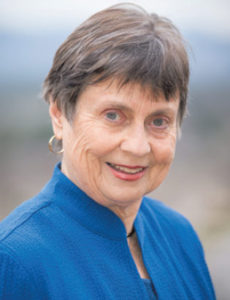Good Friday, 10 April 2020
April 10, 2020 | by Martha Rowlett
| Reading 1 | Reading 2 | Reading 3 | Reading 4 | Reading 1 Alt | Reading 2 Alt |
|---|---|---|---|---|---|
| Isaiah 52:13-53:12 | Psalm 22 | Hebrews 10:16-25 or Hebrews 4:14-16; 5:7-9 | John 18:1-19:42 |
Pilate did not know what to do with this man. Jesus was not like anyone he had encountered before. Pilate is the Roman governor in the Roman province of Judea’s headquarters in Jerusalem. Jerusalem this week is full of Jewish people who have come to town to celebrate the Passover. It’s festival time. They were all upbeat at the first of the week, Pilate noticed, but the mood has changed. This man Jesus who was so enthusiastically welcomed to town at the first of the week, is now the object of their wrath. The people want him killed, and they want it done now, and they want it done by the Roman authorities! Pilate has the power to order this, but he wants to be fair about it. So, according to John’s gospel, he engages Jesus in a probing conversation in the governor’s palace. The two men are alone because the Jewish authorities could not go into the palace because they needed to keep themselves ritually clean to eat the Passover meal. This gave Pilate an opportunity to take the conversation wherever he wanted it to go. So Pilate starts with the question: “Are you the King of the Jews?” Jesus now takes the conversation where he wants it to go. He answers: “I was born and came into the world for this one purpose, to speak about the truth. Whoever belongs to the truth listens to me.” Pilate responds: “And what is the truth?” (Good News Bible: Today’s English Version, John 18:33-38).
Pilate then goes out to distract the crowd’s attention. He has done everything he knows to do to get Jesus off the hook. But nothing works, so he finally turns Jesus over to be crucified.
And in that crucifixion, Jesus answers Pilate’s question: “What is truth?”
In the musical My Fair Lady, Eliza Doolittle sings about an answer like that. She is frustrated with the young man named Freddie who can talk a good line about love. But he doesn’t know how to show it. So Eliza’s scolds him: “Don’t talk of love! Show me!”
Jesus’ response to Pilate is not talk about truth. He shows Pilate truth.
A young minister just out of seminary went to visit an older woman in the congregation. As they talked, she asked him a very personal question. “Could you tell me” she said, “what it means to say that Jesus died on the cross for me? I’ve been an active part of the church all of my life, and I have never understood that. I have been embarrassed to ask, because I figure that everybody else knew that but me. Since you are new here, I decided to take a risk and try my question on you.” The young minister had not expected this. So he stumbled and fumbled around a bit in his explanation of the theories of the atonement.
Finally he concludes by explaining that in some ways HOW the crucifixion of Christ transforms lives will always be a mystery. We can’t say just how it works so that it will add up like an observable, measurable, and repeatable cause and effect system. But we can say that in Christ’s death on the cross, we can see the depth and power of God’s love for us. And people who come to know that love and to claim it for themselves become transformed into new people.
God’s nature is love, the kind of love that is willing to sacrifice and suffer in order to serve the best interest of the ones loved. Jesus wants Pilate, and all of us, to understand that at the heart of creation ― at the most profound levels of reality ― there is self-sacrificing love, and that love expresses itself in God’s willingness to forgive, to heal, to save, even if that means that God must enter into suffering for it to happen.
This is the truth that Jesus came to communicate as ultimate reality. When Christ is lifted up on the cross, the heart of the universe is revealed there.
So if you and I are to live truth, we must live love.
Mother Teresa, the head of the Sisters of Charity order in India, once said: “spread love everywhere you go: first of all in your own house. Give yourself to your family, your neighbor… Let no one ever come to you without leaving feeling better and happier.”
When you show God’s love in the way you live, you are in touch with ultimate reality, you are in tune with truth.

Dr. Martha Rowlett is a minister in the United Methodist Church, and author of four books on prayer. She earned her Doctor of Ministry at Claremont School of Theology in 1981 and did her doctoral project on “Process Theology of Prayer” with John Cobb. Her book, Weaving Prayer Into the Tapestry of Life, provides an overview of the understanding and practice of prayer, offering an invitation to the reader to move from thinking to doing. A French translation of this book is currently in production by a French publisher. Now Senior Pastor Emeritus at Rolling Hills United Methodist Church in Rolling Hills Estates (CA), Martha has served churches in Virginia, California and Washington state, and on the Conference staffs of both of the California annual conferences. Originally from Virginia, she has lived most of her adult life in California and Washington and currently enjoys mountain living in Asheville, North Carolina.
